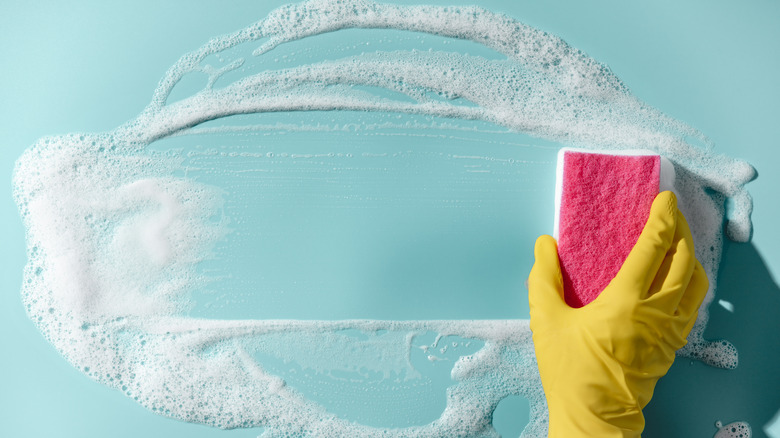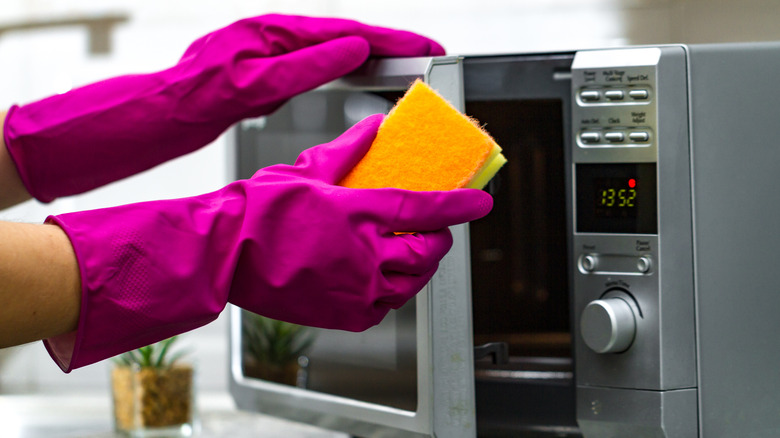The Dirty Truth Behind Your Kitchen Sponge And How To Fix It
It's the first thing you grab when there's a sudden spill: your kitchen sponge. This multitasker can soak up that juice your kid spilled, wipe down the kitchen counters after preparing a meal, and then tackle the greasy dishes in your sink. What's not to love?
Well, actually, plenty. Your kitchen sponge is a hotbed for germs, particularly because it remains moist most of the time, which allows for bacteria to thrive, according to the Michigan State University Extension. A 2017 study published by Scientific Reports (via Time) analyzed 14 kitchen sponges from various households and found that they contained an alarmingly high amount of bacteria. Another study determined that your kitchen sponge likely comprises more active bacteria than anywhere else in your home — and that includes your toilet. The dangers lurking in your sponge include pathogenic bacteria like salmonella and E. coli that can lead to disease.
Luckily, there's an easy fix for this, and you don't have to give up your beloved sponge. Keep reading to find out how to remedy your dirty kitchen sponge so it continues to clean while keeping those in your household safe from germs.
Clean your kitchen sponge with three methods
The first — and most affordable and sustainable — step you can try to rid your kitchen sponge of all those ickies is to sanitize it. There are three simple ways to go about it, according to the Michigan State University Extension.
First, zap it in the microwave. But make sure your sponge doesn't have any metallic scrub pads, which will spark up in the microwave. Thoroughly soak your kitchen sponge in water — this is crucial — so it doesn't catch fire in the microwave. Nuke it on high for one minute, which should kill bacteria. Be careful when removing the sponge, as it will be hot. This should kill 99.99999% of bacteria, per the USDA.
Another option is to place it in the dishwasher. Use the hottest and longest wash cycle as well as the dry cycle to kill 99.9998% of bacteria, according to the USDA. Finally, you can bleach your kitchen sponge to give it a thorough clean. Soak it in a solution of one-quarter to one-half teaspoon concentrated bleach (8.25% sodium hypochlorite) per quart warm (not hot) water. Let it soak for one minute.
However, some experts say that sanitizing isn't enough to kill all the germs and that you should buy a new kitchen sponge every week, per Time, although we know this isn't viable for everyone. And it certainly doesn't help the environment. The choice is yours.

